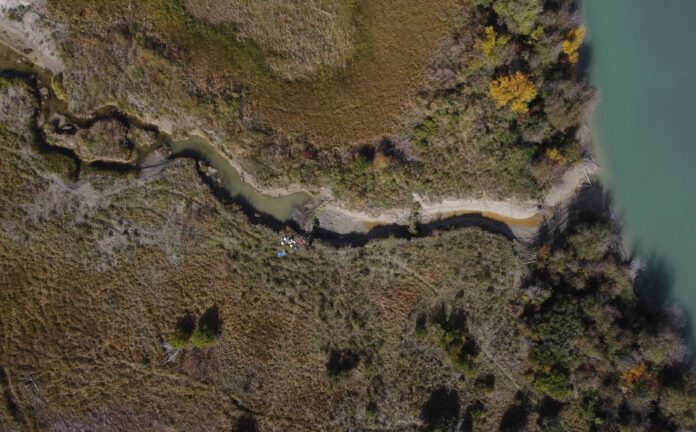A local conservation project has members taking inspiration from one of Canada’s most iconic animals as a unique method of protecting local wetlands.
The project, led by Columbia Wetlands Stewardship Partners (CWSP), aims to construct man-made beaver dams with large posts, clay, mud and debris at nine targeted restoration sites in 2024.
“Anything we do in the long term is in the face of declining water due to climate change. But, what we can do is continue efforts to help keep open water in the Columbia Wetlands through restoring abandoned beaver dams,” said Suzanne Bayley, Columbia Wetlands Stewardship Partners president.
This plan comes after researchers observed a noticeable lack of beavers in the upland wetlands, which left behind decaying and unmaintained dams.
“Beaver dams function as natural levees and create partially connected wetlands. During floods, water pours over the dam and gets trapped behind its walls,” said CWSP officials.
The CWSP said the reason why beavers are missing is not fully understood, but it could be a number of factors, such as inadequate water, lack of suitable food, an increase in predators and historic trapping.
“Beavers could be reintroduced, but this would require a permit, and unless we know why their populations are failing, they’re likely to fail again,” said Bayley.
CWSP officials said the project follows an observed drying trend over the past 50 years due to climate change, which has led to the deterioration of the upland wetlands.
“Research has found that water-loving plants are being replaced by willow, a plant that requires less water. Over the last 39 years, the spread of willow has doubled in the wetlands, pointing to a drying landscape,” said the CWSP.
A 2020 study found that certain tracts of the Columbia Wetlands have lost over 16% of its permanent open water area in the last few decades.
“Through drone surveys, we’ve seen that previously intact wetlands are transitioning into shrubs and conifers. Wetlands are no longer functioning as wetlands because they’ve been dry for a very long time,” said Jessica Holden, Wetlands Technician with Living Lakes Canada.
CWSP officials said wetlands serve a vital role in their local ecosystems, so preserving them as much as possible is an important task.
“Wetlands are among the most productive ecosystems globally, yet one of the most threatened. Since 1970, one-third of all wetlands have been lost,” said the CWSP. “It’s critical that steps are taken to better understand and protect this wetland system.”
The project’s success will be measured by continuing monitoring of the dams, wildlife populations and the overall health of the wetlands.
“We want to see more cattails, bullrushes, water lilies and open areas of water – all signs of a healthy wetland,” said Catriona Leven, Wetland Ecologist with CWSP.
This is part of a partnership between Living Lakes Canada, the CWSP and other partner organizations that have been working on developing and promoting effective stewardship of the Columbia Wetlands since 2006.
Funding for this latest effort comes from Environment and Climate Change Canada, the Columbia Basin Trust, the Columbia Valley Local Conservation Fund, the BC Wildlife Federation and other contributors.




